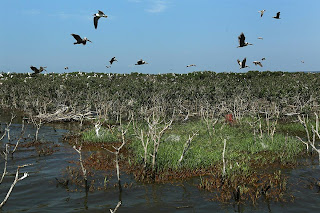BP gets green light to try 'top kill'
 The Coast Guard gave BP approval today to try its "top kill" procedure on the Gulf oil spill, while BP's chief executive earlier told NBC that he would decide shortly whether conditions were right to proceed. Tony Hayward also issued an apology of sorts for earlier comments minimizing the damage so far.
The Coast Guard gave BP approval today to try its "top kill" procedure on the Gulf oil spill, while BP's chief executive earlier told NBC that he would decide shortly whether conditions were right to proceed. Tony Hayward also issued an apology of sorts for earlier comments minimizing the damage so far."We have let people down in our defense of the shore and we are going to redouble our efforts," Tony Hayward told NBC's Today show when asked why last week he said the environmental impacts seemed "very, very modest." "I felt devastated and gutted" after viewing damage to a coastal beach on Tuesday, Hayward said.
On the "top kill" strategy, Hayward said: "Later this morning I will review that with the team, and I will take a final decision as to whether or not we should proceed."
If he determines it is safe to proceed, the procedure is expected to happen today, he said. He added it will take a day or two to determine whether the procedure worked.
The top kill involves pumping enough mud into the gusher to overcome the flow of the well, which has leaked millions of gallons of oil into the water since an April 20 rig explosion. Engineers then plan to follow it up with cement that the company hopes will permanently seal the well.
The top kill has been successful in above ground wells but has never been tried a mile beneath the sea. Hayward earlier pegged its chances of success in this case at 60 to 70 percent.
It is the company's latest effort to stem the spill and comes as politicians and Gulf residents are losing patience with the company over several failed attempts to stop the leak.
Meanwhile, a live feed of the oil leak can be seen here.



Comments